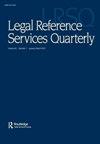From the Editor
Q4 Social Sciences
引用次数: 1
Abstract
Objectives The aim of this study was to assess the clinical severity of COVID-19 pneumonia using qualitative and/or quantitative chest computed tomography (CT) indicators and identify the CT characteristics of critical cases Materials and Methods Fifty-one patients with COVID-19 pneumonia including ordinary cases (group A, n = 12), severe cases (group B, n = 15), and critical cases (group C, n = 24) were retrospectively enrolled The qualitative and quantitative indicators from chest CT were recorded and compared using Fisher exact test, one-way analysis of variance, Kruskal-Wallis H test, and receiver operating characteristic analysis Results Depending on the severity of the disease, the number of involved lung segments and lobes, the frequencies of consolidation, crazy-paving pattern, and air bronchogram increased in more severe cases Qualitative indicators including total severity score for the whole lung and total score for crazy-paving and consolidation could distinguish groups B and C from A (69% sensitivity, 83% specificity, and 73% accuracy) but were similar between group B and group C Combined qualitative and quantitative indicators could distinguish these 3 groups with high sensitivity (B + C vs A, 90%;C vs B, 92%), specificity (100%, 87%), and accuracy (92%, 90%) Critical cases had higher total severity score (>10) and higher total score for crazy-paving and consolidation (>4) than ordinary cases, and had higher mean lung density (>−779 HU) and full width at half maximum (>128 HU) but lower relative volume of normal lung density (≦50%) than ordinary/severe cases In our critical cases, 8 patients with relative volume of normal lung density smaller than 40% received mechanical ventilation for supportive treatment, and 2 of them had died Conclusions A rapid, accurate severity assessment of COVID-19 pneumonia based on chest CT would be feasible and could provide help for making management decisions, especially for the critical cases来自编辑器
目的应用定性和/或定量胸部计算机断层扫描(CT)指标评估新冠肺炎肺炎的临床严重程度,并确定危重病例的CT特征材料与方法50例新冠肺炎肺炎患者,包括普通病例(A组,n=12)、重症病例(B组,n=15)、,和危重病例(C组,n=24)。使用Fisher精确检验、单向方差分析、Kruskal-Wallis H检验和受试者操作特征分析记录并比较胸部CT的定性和定量指标,固结的频率,疯狂的铺设模式,在更严重的病例中,空气支气管图增加。定性指标,包括全肺的总严重程度评分和疯狂铺贴和巩固的总评分,可以区分B组和C组(69%的敏感性、83%的特异性和73%的准确率),但B组和C组之间相似。定性和定量指标相结合可以区分这三组具有高灵敏度(B+C vs A,90%;C vs B,92%)、特异性(100%,87%)和准确性(92%,90%)。危重病例的严重程度总分(>;10)和疯狂铺路和巩固总分(<;4)高于普通病例,与普通/重症病例相比,平均肺密度(>;−779HU)和半高全宽(>:128HU)更高,但正常肺密度的相对体积(≤50%)更低。在我们的危重病例中,8名正常肺密度相对体积小于40%的患者接受了机械通气支持治疗,其中2人已经死亡,基于胸部CT对新冠肺炎肺炎进行准确的严重程度评估是可行的,并可为做出管理决策提供帮助,尤其是对危重病例
本文章由计算机程序翻译,如有差异,请以英文原文为准。
求助全文
约1分钟内获得全文
求助全文
来源期刊

Legal Reference Services Quarterly
Social Sciences-Law
CiteScore
0.30
自引率
0.00%
发文量
13
期刊介绍:
An important forum for daily problems and issues, Legal Reference Services Quarterly will assist you in your day-to-day work as it has been helping other law librarians and members of the legal profession for over a decade. You will find articles that are serious, humorous, critical, or simply helpful to the working librarian. Annotated subject bibliographies, overviews of legal literature, reviews of commonly used tools, and the inclusion of reference problems unique to corporate law libraries, judicial libraries, and academic collections will keep you up-to-date on the continuously expanding volume of legal materials and their use in legal research.
 求助内容:
求助内容: 应助结果提醒方式:
应助结果提醒方式:


